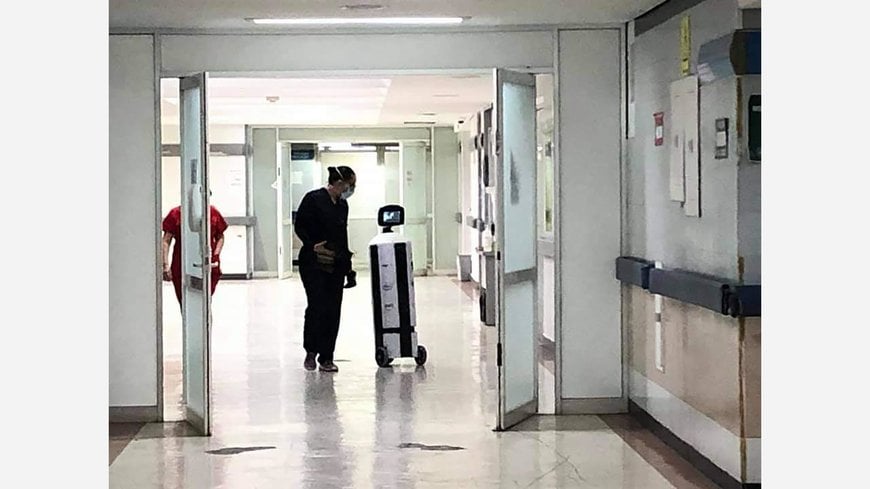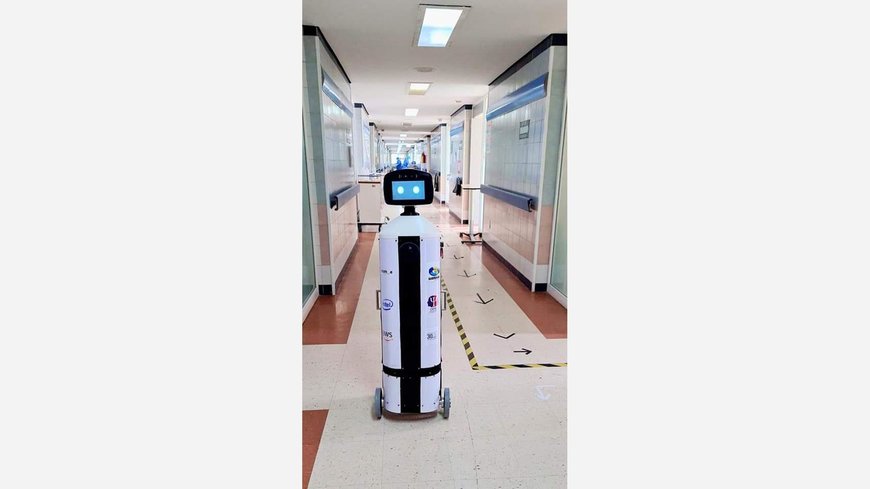www.ptreview.co.uk
20
'21
Written on Modified on
Autonomous Robot with Intel Tech Triages COVID-19 Patients
RoomieBot makes decisions, like where to direct patients, and is used by medical staff to interact with high-risk COVID-19 patients.

What’s New: Over the past year, sick patients stepping into the Instituto de Seguridad y Servicios Sociales de los Trabajadores del Estado hospital in Mexico immediately have their temperature, blood oxygen level and medical history recorded. But not by a human — instead, they’re approached by RoomieBot, a completely autonomous humanoid robot that runs on Intel technology.
“The greatest value that Intel technology has generated for us is the radical reduction of the time to market of our robots, from the development stage to commercialization. We previously developed 100% of the technological stack of our robots internally in Roomie, but we’re currently using Intel's out-of-the-box hardware and software capabilities such as RealSense, NUC and OpenVINO technology.”
–Aldo Luévano, Roomie co-founder and CEO
How It Works: About the size of a small propane gas tank on wheels, RoomieBot makes decisions, such as which doctor to direct a patient to, and is also used by medical staff to interact with high-risk COVID-19 patient. Hospitals also turned to RoomieBot for a heartbreaking yet welcome use case of technology: to provide live, bedside video calls between terminally ill patients and their families so loved ones could say a final farewell.
Why It Matters: Six-year-old Mexican startup Roomie (on its website, the firm calls itself the “first Latin American robotics company to specialize in service robots”) originally designed the robot to take the place of a concierge in hotels and restaurants. But when the coronavirus pandemic struck last year, team Roomie wanted to help Mexico’s overstretched, exhausted front-line medical workers.
In just four weeks, Roomie’s engineers adapted the robot to function in a hospital environment — they added vital sensors, including an oximeter (a device that estimates oxygen saturation levels of the blood), and made other improvements, such as coating the robot’s outer skin and LCD panel with an antibacterial shield. The team’s quick work didn’t go unnoticed: Forbes magazine (Spanish) named Roomie IT as one of the “30 most promising companies in business.”

About Intel’s Role: RoomieBot runs on Intel-based technology, including artificial intelligence algorithms that run on the Intel® Movidius Vision Processing Unit (VPU), 8th Gen Intel NUCs and Intel® RealSense cameras. The robot collects patient real-time data, which is streamed securely to Amazon Web Services, thus available to authorized medical staff.
Intel’s partnership with Roomie precedes the pandemic. Socrates Huesca Gomez, Intel field sales engineer, recalls, “When Roomie first approached us two years ago, their early robotics projects were running on non-Intel components which didn’t meet their performance requirements — so they came to us.”
“This year, we’re focused on helping Roomie upgrade their core components with newer Intel-based technology, optimize their costs, shorten their delivery times, and partnering with them on critical technical updates,” Huesca Gomez says.
www.intel.com

